Author Archives: Danica Davidson
October 2, 2017 by Danica Davidson
An Interview with Eva Schloss, Anne Frank’s Stepsister
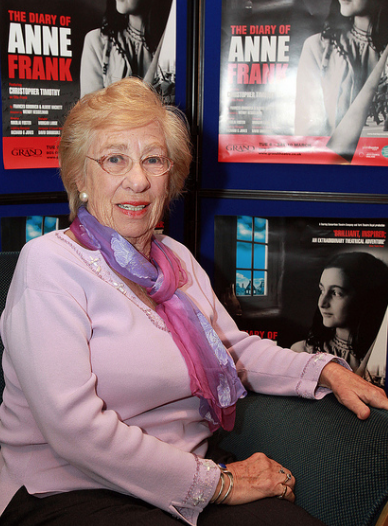
Eva Schloss
Eva Schloss is an Auschwitz-Birkenau survivor, author, Holocaust education activist — and stepsister to Anne Frank. She travels the world to tell her story, and on September 7 she was at a Western Michigan University event presented by the Chabad of Kalamazoo. She was interviewed by her close friend and now co-presenter, Dr. Tami Weiss, Professor of Art Education at the University of Wisconsin-Stout. Weiss met Schloss in 2015 when she produced a play about Eva’s life, And Then They Came For Me: Remembering the World of Anne Frank by American playwright, James Still.
Schloss told about how she escaped Vienna after the Auschluss with her parents, Erich and Elfriede (Fritzi) Geiringer, and her older brother Heinz. They eventually settled in Amsterdam, where she became friends with her neighbor, Anne Frank, who was the same age. In 1942 the family went into hiding, and in 1944 they were betrayed by a Dutch nurse who had pretended to be helping but who was really a double-agent for the Gestapo. It was Schloss’s 15th birthday.
On the train to Auschwitz, Heinz told Schloss about paintings he’d made in hiding and had concealed below floorboards. Erich and Heinz perished days before liberation, and when Schloss later went in search of her male relatives in the men’s part of the camp, she came across Anne’s father Otto Frank instead. The three survivors—Schloss, Fritzi and Otto Frank — eventually drew close, and Fritzi and Otto married, thus making Schloss Anne’s stepsister.
After liberation, Frank came into possession of his daughter’s diary, crying repeatedly as he read it over the course of three weeks. Schloss, meanwhile, found her brother’s hidden paintings right where he’d said they’d be—under the floorboards of the place where he was in hiding. Schloss’s books, Eva’s Story and The Promise tell this story, and more. I asked Schloss about her experiences.
- No Comments
July 27, 2017 by Danica Davidson
Breaking the Taboo: Women Who Regret Motherhood
Orna Donath, an Israeli sociologist, anthropologist and author of Making a Choice: Being Childfree in Israel, has come out with a new study titled Regretting Motherhood. Applying a feminist lens, it interviews Jewish Israeli women who, as the title indicates, regret becoming mothers and discuss the ramifications of their regrets. Donath shows the difference between not wanting to be a mother and not liking children; the women in the study often talk about their love for their children and what they do for the sake of the children’s well-being, while saying that if they could go back in time, they would not want to be mothers. This groundbreaking study tackles a rarely discussed subject, often left unmentioned because of obvious taboos. Donath told Lilith why she decided to write about this aspect of women’s reproductive rights, the stigma around women who don’t want to be mothers, and how she sees the possibility of a positive paradigm shift.
Danica Davidson: Before Regretting Motherhood, you were already writing about reproductive rights and deciding not to be a mother. Why did you decide to write a book from this angle?
Orna Donath: At the end of my first study (it was conducted between 2003-2007 about Israeli-Jewish women and men who do not want to be parents), I was left with one sentence that kept troubling me and that is the certain promise towards women mostly: “You will regret it. You will regret not being a mother.” It was hard for me to leave it at the dichotomous determination that decisively pins regret to being a non-mother by threatening women with regret as a weapon, while at the same time simply excluding any possibility to think of regret following motherhood.
Since I was sure that there are women who regret becoming mothers, I decided then to write my Ph.D. about it (which later on turned out to be the book Regretting Motherhood). I didn’t want to learn about regretting motherhood “only,” but to study the relationship between society and emotions, and the political usage of them as well.
- 1 Comment
December 29, 2016 by Danica Davidson
The Surprising Jewish Roots of Barbie
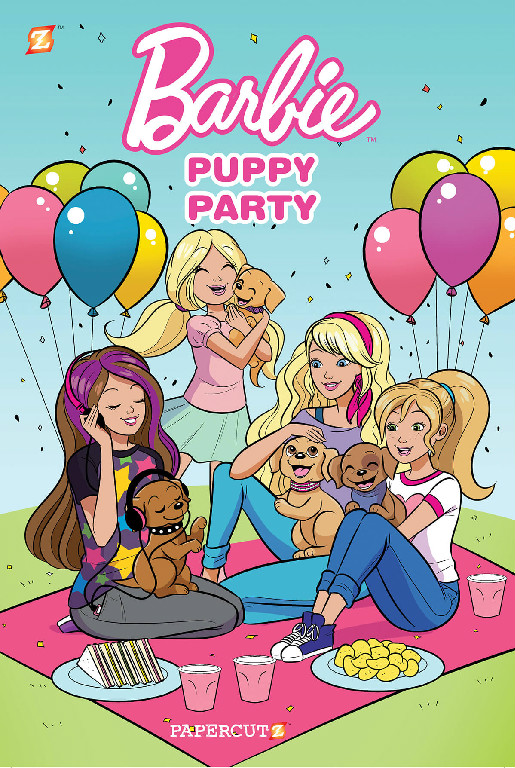 I originally knew Barbie as a doll, a franchise, an iconic figure in many childhoods, and a career woman who wore many hats, both literally and figuratively. It wasn’t until I was tapped by the kids’ comics publisher Papercutz and Mattel to write a Barbie graphic novel that I learned about her Jewish beginnings.
I originally knew Barbie as a doll, a franchise, an iconic figure in many childhoods, and a career woman who wore many hats, both literally and figuratively. It wasn’t until I was tapped by the kids’ comics publisher Papercutz and Mattel to write a Barbie graphic novel that I learned about her Jewish beginnings.
Researching the history of the character while brainstorming, I found many lesser-known facts about her I could relate to. Barbie was originally created by Ruth Handler, a Jewish woman whose parents left Poland for America because of anti-Semitism, just as my family left the Pale of Settlement to escape from pogroms.
- No Comments
December 11, 2016 by Danica Davidson
This Bestselling Author Talks Judaism, Activism and Her New Book
 New York Times bestselling author Caroline Leavitt’s new book, Cruel Beautiful World, shows a family of Jewish women living through the cruelty and beauty of the world in 1969-1970. High schooler Lucy runs away with an older man, her sister Charlotte experiences the outside world in her time at Brandeis, and their guardian Iris discovers new love in her eighties. Against this intimate portrait of family, there is also a background of women’s rights, political upheaval and war.
New York Times bestselling author Caroline Leavitt’s new book, Cruel Beautiful World, shows a family of Jewish women living through the cruelty and beauty of the world in 1969-1970. High schooler Lucy runs away with an older man, her sister Charlotte experiences the outside world in her time at Brandeis, and their guardian Iris discovers new love in her eighties. Against this intimate portrait of family, there is also a background of women’s rights, political upheaval and war.
Leavitt has written about Jewish women’s lives in fiction before, and now with Cruel Beautiful World, she speaks to author Danica Davidson about autobiographical elements, Jewish literature and the lives of Jews and women now compared to 1970.
- No Comments
November 20, 2014 by Danica Davidson
The Very Surprising History of Jewish Women in Comic Books
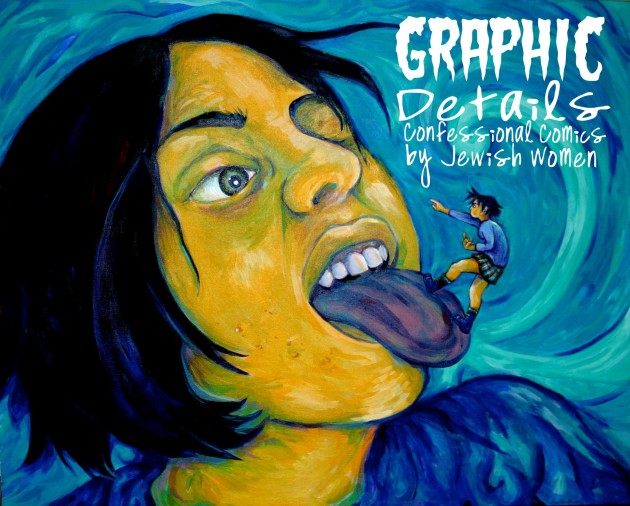 Jewish creators like Jerry Siegel and Joe Shuster (creators of Superman) and Art Spiegelman (of Maus) have had a strong influence on comics, but not so much attention has been turned on female Jewish comics creators. After Michael Kaminer wrote a piece on Jewish women’s comics for The Jewish Daily Forward, Sarah Lightman reached out to him about making a museum exhibit of female Jewish comics creators.
Jewish creators like Jerry Siegel and Joe Shuster (creators of Superman) and Art Spiegelman (of Maus) have had a strong influence on comics, but not so much attention has been turned on female Jewish comics creators. After Michael Kaminer wrote a piece on Jewish women’s comics for The Jewish Daily Forward, Sarah Lightman reached out to him about making a museum exhibit of female Jewish comics creators.
The result was “Graphic Details: Confessional Comics by Jewish Women.” The exhibit, which is currently in London, shows the work of 18 Jewish women, including Lightman, Miriam Katin, Ariel Schrag, Trina Robbins, Aline Kominsky-Crumb and Vanessa Davis.
The success of the exhibit has led to the recently released book Graphic Details: Jewish Women’s Confessional Comics in Essays and Interviews (McFarland $49.95), which Lightman had previously discussed with Lilith. This anthological book takes an academic approach to the intersection of women, Judaism and comics. All the women from the exhibit take an important place in these pages through biographies and work samples, including beautiful full-color spreads. Some of them are interviewed about their work, and essays by other comics scholars discuss the meaning, influence and strength in the creators’ comics. However, the book does not stop here: it also details the lives and works of other female Jewish comics creators.
- 1 Comment
February 27, 2014 by Danica Davidson
Winning Any Office (or Male-Dominated Environment)

www.flickr.com/76029035@N02
Rebecca Sive was a cofounder of the Jewish Fund for Justice, one of the founding organizers for EMILY’s List and was included in the book Feminists Who Changed America: 1963-1975. This is still only a small part of her résumé, but Sive has taken her knowledge, experience and passion for women’s rights and penned the book Every Day Is Election Day: A Woman’s Guide to Winning Any Office, from the PTA to the White House” called by Publishers Weekly “a clear and persuasive roadmap to female political success.”
Sive’s book is both down-to-earth and invigorating as it champions women to move forward and gives concrete details on how to do so. She also supplies real-time advice from a host of powerhouse women in the worlds of politics, business and philanthropy. While her book is angled toward politics and running for office, Sive’s advice can be used in any other male-dominated environment.
Danica Davidson, a journalist whose writing on women’s rights and women’s issues has appeared in “Lilith,” “Ms.,” MTV and CNN, interviewed Sive.
Danica Davidson: How did you first get involved in feminism?
Rebecca Sive: I became a feminist after reading Sisterhood Is Powerful and The Dialectic of Sex while in college. In different ways, each was eye-opening, informative and inspirational. Although I had always been independent and a leader, these books put a face and a politics on my views, interests and political commitments.
My mother and father had taught my sister and me to be independent and to do good, so it was a relatively short step to becoming a feminist activist with these goals, once I learned about the women’s movement (around 1971). Before joining the American Jewish Committee — after graduate school — and co-founding the Jewish Fund for Justice several years later, I was a college and graduate school feminist activist.
I led a campaign (pre-Roe v. Wade) to provide contraception services at my college (Carleton College) health clinic. Before we succeeded — after organizing and running a campus-wide campaign — women students had to travel to a Planned Parenthood clinic 40 miles away. (Needless to say, it seemed that whatever the boy students needed was available!)
At the American Jewish Committee, I organized various women’s projects whose goals were to further collaboration among Jewish women and women of other ethnic groups. All the projects had a feminist focus. Among the projects was the Illinois Women’s Agenda, a coalition of over 70 organizations, including Jewish women’s organizations, such as the National Council of Jewish Women. This was the first modern women’s-movement-era coalition to advocate for economic security, women’s reproductive autonomy and other issues in the state. (An article I wrote about it is in this book: The Roads They Made: Women in Illinois History).
Another project was an exhibit on Illinois women’s history for the U.S. Bicentennial, which led to the re-appearance of a Jewish woman, Hannah Shapiro Glick, who started the historic 1910 garment workers’ strike in Chicago.
The Jewish Fund for Justice (JFJ) was an idea of Heather Booth’s and Si Kahn’s and maybe a couple others. We met for the first time at the Midwest Academy in Chicago, which hosted many progressive gatherings (and where I was trained by Heather as a community organizer). All of us had considerable social justice organizing experience. We knew the history of the American Jewish community’s commitment to social justice and wanted to institutionalize it among like-minded donors at a time — the Reagan era — when conservatives were trying to dismantle civil rights achievements.
DD: How do you think being Jewish helped shape your beliefs on social justice, feminism and leadership?
- No Comments
December 2, 2013 by Danica Davidson
Women’s Voices Through Comics
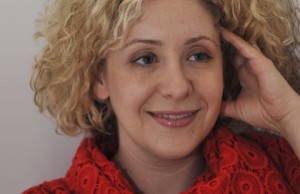 Sarah Lightman is an artist, curator and academic with a special interest in Jewish women creating autobiographical comics. She’s the co-curator of the touring museum exhibit Graphic Details: Confessional Comics and has just completed editing the book Graphic Details: Essays on Confessional Comics by Jewish Women, which will be published next year by McFarland. This will be followed in 2015 by her own autobiographical graphic novel, The Book of Sarah to be published by Myriad Editions in 2015. Lightman is also a director of Laydeez Do Comics, the first women’s led comics forum to focus on autobiographical comics with branches in the UK, Ireland and USA. While the concentration is on women, anyone may attend.
Sarah Lightman is an artist, curator and academic with a special interest in Jewish women creating autobiographical comics. She’s the co-curator of the touring museum exhibit Graphic Details: Confessional Comics and has just completed editing the book Graphic Details: Essays on Confessional Comics by Jewish Women, which will be published next year by McFarland. This will be followed in 2015 by her own autobiographical graphic novel, The Book of Sarah to be published by Myriad Editions in 2015. Lightman is also a director of Laydeez Do Comics, the first women’s led comics forum to focus on autobiographical comics with branches in the UK, Ireland and USA. While the concentration is on women, anyone may attend.
Danica Davidson, whose journalism on graphic novels has been published by Lilith, MTV and CNN, interviewed Lightman.
Danica Davidson: Can you tell us about Graphic Details: Confessional Comics by Jewish Women?
Sarah Lightman: Graphic Details is co-curated by myself and Michael Kaminer, who’s a New York-based journalist and comics collector. He wrote an article for the Jewish Daily Forward about some Jewish women comic artists he’d seen at a comics event. I read the article and realized that was exactly what I was doing in the UK, but I hadn’t found many other Jewish people doing the same thing. It was really exciting. I suggested to Michael that we make an exhibition out of his article, because I had already curated a number of shows, including a series on contemporary artists at Ben Uri Gallery, the London Jewish Museum of Art in London. Also, I’d just curated a show “Diary Drawing,” at The Centre for Recent Drawing, with Ariel Schrag and Miriam Katin. So I already knew a few Jewish comic artists but I didn’t realize there were quite so many making autobiographical comics!
The project snowballed from there, and it’s been touring for three, four years. It’s opening in Miami at the end of the month, at the Jewish Museum in Florida. The show is coming to London at the end of next year to a really great gallery called Space Station Sixty-Five. We’re going to be doing a one-day symposium about Jewish women comic artists at JW3, the new Jewish Community Centre for London, and we’re looking to do a study day as well for artists.
I just finished editing the book about the exhibition, and it’s about 400 pages. It will be published by McFarland, and it’s got essays and interviews, information and images about all the artists in the show. It’s going to be the first book ever published to focus on Jewish women in comics.
DD: What other work have you done to promote the work of women in the comics field, particularly Jewish women?
SL: When the exhibition opened in New York, I co-chaired a symposium with two New York academics, Tahneer Oksman and Amy Feinstein. I’ve just written a chapter about Diane Noomin’s comic, called “Baby Talk: A Tale of Four Miscarriages” that’s in Trauma Narratives and Herstory published by Palgrave Macmillan. None of the other essays in the collection were about graphic novels and it’s always great to bring comics to a new audience. I’ve written for websites, books and newspapers about Jewish women and comics. For example, I contributed to 1001 Comics You Must Read Before You Die, so I wrote about Charlotte Salomon, Ariel Schrag, Gabrielle Bell. I can make sure these women get included in collections. I also wrote about Jewish Women and Comics for the new Routledge Handbook to Contemporary Jewish Cultures(2014). Most recently I wrote for the Canadian website “A Bit off the Top” on the Israeli comic artist Ilana Zeffren.
I’m also doing a doctorate on autobiographical comics at University of Glasgow: “The Drawn Wound: Hurting and Healing in Autobiographical Comics.” I’m really interested in traumatic narratives and how people draw and visualize their lives and whether there’s potential for something called Post Traumatic Growth. It’s the idea that if something terrible happens, your life can change for the better. I’m especially interested in exploring how the creative process of making comics can make a difference.
In addition, I’m looking at how Jewish women have been written out of Jewish textual history and intellectual history, and how they’re using comics now to ensure their voices and life experiences are heard and recorded.
- No Comments
October 16, 2013 by Danica Davidson
The Holocaust in Graphic Form
 Miriam Katin served as a graphic artist in the Israel Defense Forces in the 1960s, and later she did artwork for MTV and Disney. Her first graphic memoir, We Are On Our Own, was published in 2006 by Drawn and Quarterly and recounts how she and her mother survived the Holocaust in Hungary. Her second graphic memoir, Letting It Go [reviewed in Lilith here], came out last spring and shows Katin releasing the past.
Miriam Katin served as a graphic artist in the Israel Defense Forces in the 1960s, and later she did artwork for MTV and Disney. Her first graphic memoir, We Are On Our Own, was published in 2006 by Drawn and Quarterly and recounts how she and her mother survived the Holocaust in Hungary. Her second graphic memoir, Letting It Go [reviewed in Lilith here], came out last spring and shows Katin releasing the past.
Danica Davidson, whose journalism on graphic novels has been published by Lilith, MTV and CNN, spoke to Katin about her work.
Danica Davidson: Why is it you decided to use the graphic novel format to talk about your experiences in the Holocaust?
Miriam Katin: The stories of my background and what happened to us were always there, continuing in my mind. I don’t write, but I draw, and when I discovered comics for myself in about 2000, I thought I could tell the stories I have. As far as Art Spiegelman’s Maus is concerned, it gave me “permission” to do the stories in drawings.
DD: Why do you think graphic novels work so well as an outlet for memoirs?
MK: It works for a certain audience. These would be mostly young people and not-so-young people who grew up on superhero comics. You can still see them at bookstores reading the manga or graphic novels. Those are most of the readers, and for them to discover history, it’s probably working very well. As far as my work is concerned, for example, my publisher was hoping it would be a crossover with old people discovering comics. It didn’t work so well. I know so many people who are really serious readers and they’d look at this and get really confused and say, “I can’t deal with it. I have no idea what this is.” The old people who bought my book were people who know me and were interested in stories about the war.
I saw a real difference between when my first book came out in 2006 and my second book this past year. This time I saw many more old people buying it, so they are connecting to read pictures.
I was really lucky to be picked up by such a marvelous publisher. My first work that I did was in 2000 and it was only four pages. It got released to fantastic reviews, and one reviewer said it would stand up even in Drawn and Quarterly. I had no idea who was
Drawn and Quarterly, so I ran to the bookstore and got their stuff. I sent my first work to Drawn and Quarterly with my review and they called me up on the telephone to say they loved my work and, oh, I must have something around I could send them. I did this twelve page story about the Hungarian uprising and I received a nomination for an Eisner Award. That was my second work in comics, and I received a number of commissions.
- No Comments
October 19, 2011 by Danica Davidson
A Conversation with Gloria Feldt
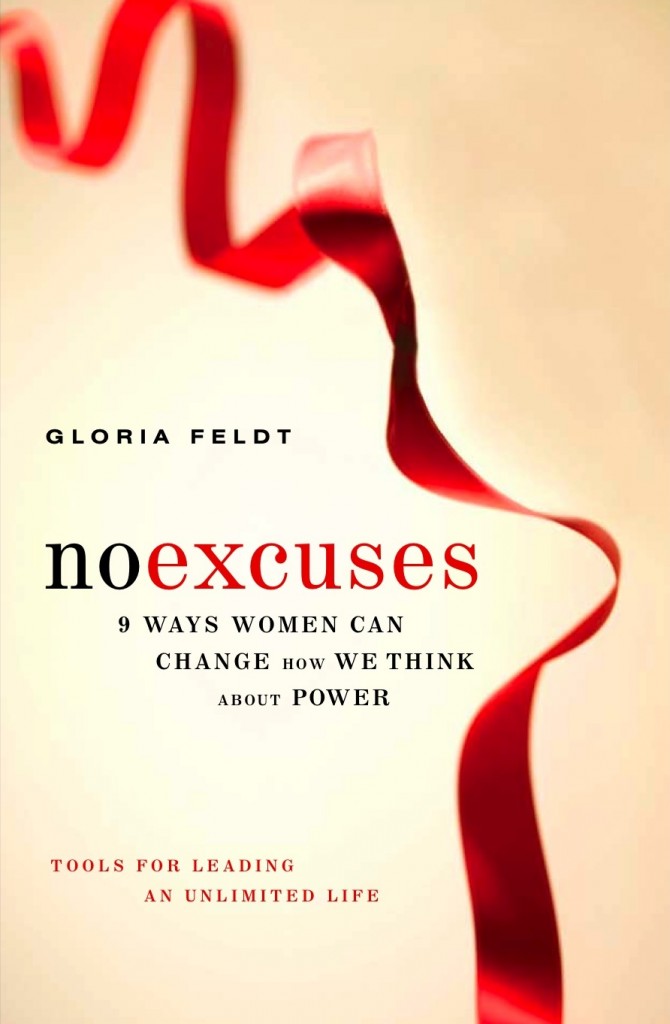 Right-wing challenges to women’s access to safe and legal abortion, and to other reproductive rights, are being mounted in many locations. Gloria Feldt (www.gloriafeldt.com), former president and CEO of Planned Parenthood, is a leading activist for women’s rights. Author of No Excuses: 9 Ways Women Can Change How We Think About Power, Feldt has some ideas about how we can seize back this important agenda.
Right-wing challenges to women’s access to safe and legal abortion, and to other reproductive rights, are being mounted in many locations. Gloria Feldt (www.gloriafeldt.com), former president and CEO of Planned Parenthood, is a leading activist for women’s rights. Author of No Excuses: 9 Ways Women Can Change How We Think About Power, Feldt has some ideas about how we can seize back this important agenda.
How did your background as a Jewish teen mother get you where you are today?
When I was young, I felt different for being Jewish in a small town in Texas. I think that that feeling of differentness made me want to be the all-American girl when I was a teenager. And being the all-American girl in rural West Texas in the 1950s meant getting the boy, getting married, having babies, packing your husband’s lunch, having a picket fence.
I became pregnant. On one level, it was unintentional. On another, I think it was intended. I was conforming to the role society was telling me I should play.
As I became more mature, I began to reflect on my upbringing. I began to work to help other people get their civil rights, people who’d been treated as different. Fighting for other oppressed people began to give me strength. I became grateful for knowing what it was like to be different. I was also informed by the Jewish ethic, tikkun olam, even though those words were never uttered in our house, as far as I can remember. But once I came to understand that concept, I understood the Jewish imperative for social justice had influenced me.
- No Comments
 Please wait...
Please wait...